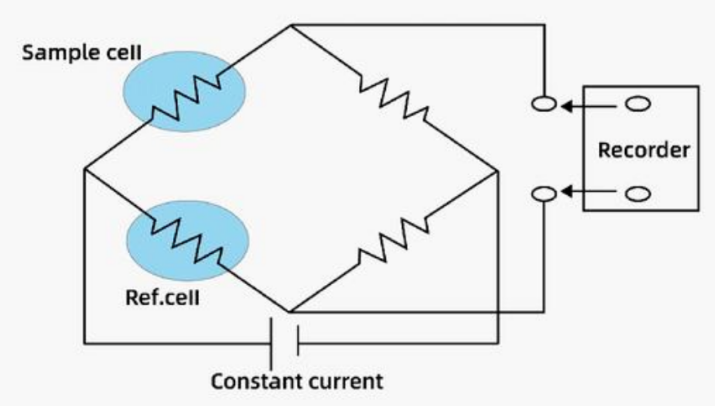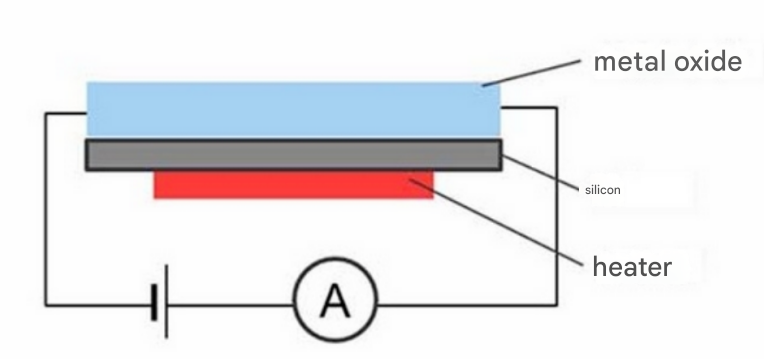
I. Introduction
Refrigerant is the "blood" of a refrigeration system; its leakage directly causes economic losses, exacerbates the greenhouse effect, and some flammable refrigerants can lead to safety accidents. Therefore, real-time and accurate monitoring of refrigerant leaks is crucial. Among numerous detection technologies, NDIR, thermal conductivity, and metal-oxide-semiconductor (MOS) technologies have become mainstream in the market due to their respective characteristics. Understanding their principles and differences is fundamental to making correct technological decisions.
II. Analysis of the Principles and Characteristics of Three Technologies
1. NDIR (Non-Dispersive Infrared) Technology
NDIR technology utilizes the absorption characteristics of gases to infrared light of specific wavelengths. Each gas molecule (such as common refrigerants like R32 and R134a) has its unique infrared absorption fingerprint. By measuring the intensity of infrared light absorbed at a specific wavelength, the sensor can accurately calculate the concentration of the corresponding refrigerant.

Advantages:
High Selectivity: Accurately identifies and measures specific types of refrigerants, virtually unaffected by other non-absorbing gases.
High Accuracy and Reliability: Stable measurement results, enabling precise quantitative detection from ppm to percentage levels, complying with stringent industry safety regulations.
Long Lifespan: Optical components do not chemically react with gases, are less prone to "poisoning" or aging, and typically have a lifespan of 5-10 years.
Rapid Response: Can respond to leaks within seconds.
Disadvantages:
High Cost: The core optical components and precision structure result in relatively high initial investment costs.
Environmental Dependence: Measurement results are susceptible to fluctuations in ambient temperature and pressure, requiring algorithmic compensation.
Detection Limitations: Cannot detect gases with symmetrical structures or those without infrared absorption activity (such as H₂, N₂, O₂, Cl₂, etc.).
2. Thermal Conductivity (TCD) Technology
Temperature conductivity technology is based on the physical property that different gases have different thermal conductivities. When the heating element inside the sensor comes into contact with a gas with a different thermal conductivity than the background gas (usually air), its heat dissipation rate changes, causing a change in the element's resistance, thereby detecting the gas concentration.

Advantages:
Low cost: Simple structure, low manufacturing cost, and price advantage.
Broad-spectrum response: Hydrogen has a much higher thermal conductivity than air, making TCD extremely sensitive to it; however, its sensitivity is lower for gases with thermal conductivity close to air (such as CO2).
Long lifespan: No consumable chemical materials, stable physical properties.
Disadvantages:
Non-selective: The biggest drawback is its inability to distinguish between different gas types. It cannot determine whether the problem is due to refrigerant leakage, changes in ambient temperature, humidity, or wind speed, or interference from other gases (such as CO2), leading to a high risk of false alarms.
Susceptible to environmental interference: Very sensitive to ambient temperature, humidity, and airflow, resulting in insufficient stability and accuracy.
Strong background dependence: Its measurement depends on the stability of the background air composition, limiting its applicability.
3. Metal-Oxide-Semiconductor (MOS) Technology
MOS technology is based on the principle that gas adsorption on the semiconductor surface causes changes in conductivity. When the gas to be measured comes into contact with the semiconductor at a certain temperature, a redox reaction occurs, causing a change in the semiconductor's conductivity. The concentration of a gas can be determined by measuring changes in electrical parameters such as resistance, current, or voltage.

Advantages:
Ultra-high sensitivity: Extremely sensitive to trace amounts of volatile organic compounds (VOCs) and refrigerants, down to the ppb level, capable of detecting minute leaks.
Extremely low cost: Mature manufacturing process, highly competitive cost, suitable for large-scale deployment.
Compact size: Easy to integrate into various portable and consumer-grade devices.
Disadvantages:
Extremely poor selectivity, extremely high false alarm rate: Strongly responds to various VOCs such as alcohol, smoke, and cooking fumes, easily generating false alarms.
Inability to quantify, poor stability: Output signal is non-linear with concentration, and baseline is prone to drift, requiring frequent calibration and unable to perform accurate measurements.
Susceptible to poisoning and aging: Contact with substances such as silicides and sulfides may cause permanent damage to sensor performance, resulting in a relatively short lifespan (typically 3-5 years).
III. Comprehensive Comparison and Application Scenarios Summary
| Feature Dimensions | NDIR Technology | Thermal conductivity technology | Metal-Oxide-Semiconductor Technology |
Selectivity and Recognition Capability | Superior (can identify specific gases) | Poor (responds only to differences in thermal conductivity) | Poor (responds to multiple VOCs) |
Measurement Accuracy and Stability | High | Medium | Low (prone to drift, high false alarm rate) |
Sensitivity | High (ppm level) | Medium | Extremely High (ppb level) |
Cost | High | Medium | Low |
Lifespan | Long-term (5-10 years) | Long-term | Short (3-5 years) |
Application Scenarios | High-end commercial/industrial refrigeration, automotive air conditioning, regulatory compliance testing | hydrogen detection, low-cost broad-spectrum alarm | Low-cost home appliances, consumer-grade leak detectors |
Based on the above comparison, the applicable scenarios for the three technologies are clearly distinct:
NDIR technology is the preferred choice for scenarios requiring high performance, high reliability, and regulatory compliance. Despite its higher initial investment, its accurate quantitative capabilities, low false alarm rate, and long lifespan make it the gold standard for leak detection in commercial, industrial, and automotive air conditioning sectors.
Thermal conductivity technology has a place in specific fields (such as hydrogen leak detection) and in cost-sensitive, broad-spectrum alarms with less stringent gas identification requirements, but its application is gradually shrinking in mainstream refrigerant precision monitoring.
Metal-oxide-semiconductor (MODS) technology, with its extremely low cost and ultra-high sensitivity, is mainly suitable for consumer products with a certain tolerance for false alarms, such as the built-in leak alarm functions of household air conditioners and refrigerators, but it is not suitable for industrial or commercial applications requiring high reliability.
IV. Conclusion
In the field of refrigerant leak detection, there is no universal solution that "suits all scenarios with one technology." NDIR, thermal conductivity, and metal-oxide-semiconductor technologies constitute a technical spectrum ranging from high-end to low-end, and from precise to broad-spectrum.
With increasingly stringent global requirements for the safety and environmental friendliness of refrigeration systems, NDIR technology, which provides accurate and reliable data, is demonstrating growing market dominance and representing the mainstream direction of industry technological development. Meanwhile, thermal conductivity and MOS technologies continue to play important complementary roles in their respective market segments, leveraging their unique cost and sensitivity advantages. Users should carefully select the most suitable sensing technology based on their actual needs, budget, and tolerance for false alarms.
Share